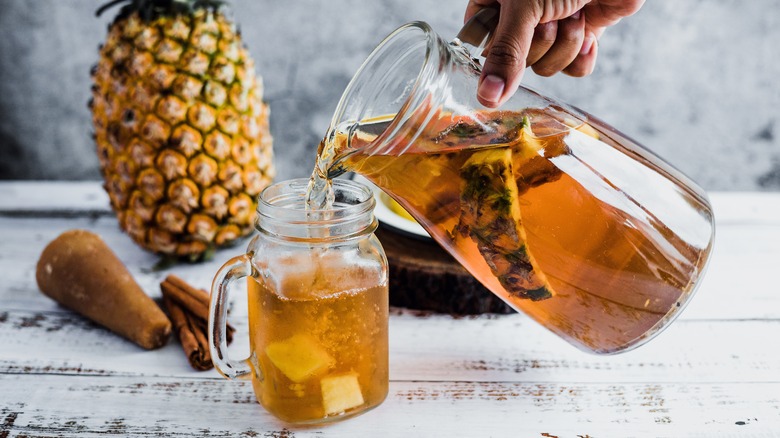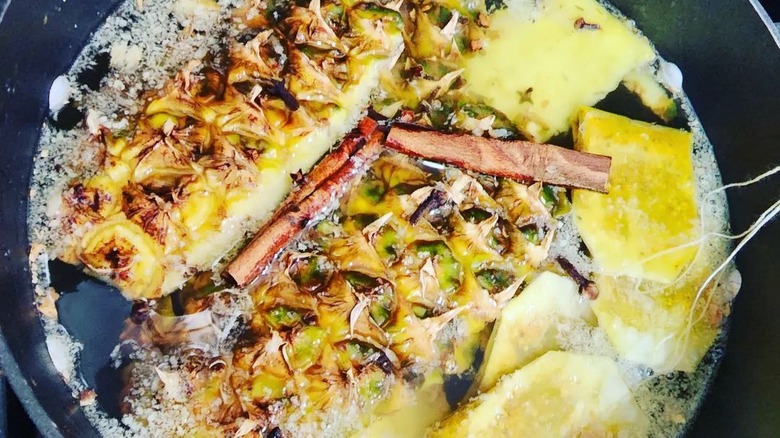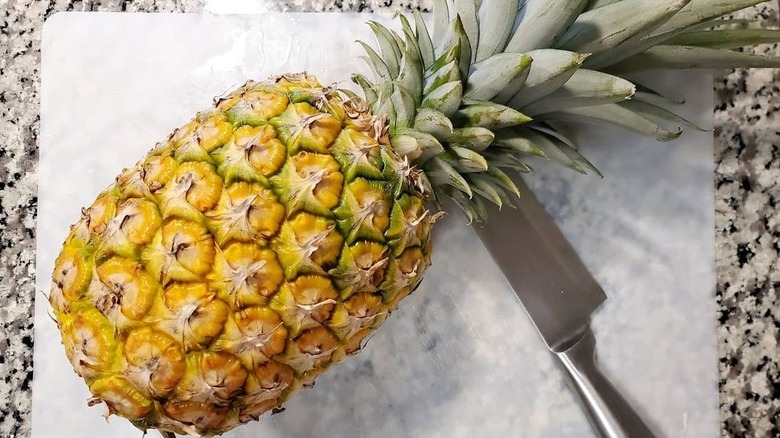Save Pineapple Crowns For The Ultimate Tropical Summer Tea
Pineapple crowns may never be valued as much as they were during the 17th century, when the native South American fruit was embraced by European nobles as a symbol of royalty, but these crowns, or leaves, still have a wide variety of both practical and decorative uses. One of these just happens to be making tea. So don't even consider discarding pineapple leaves and skin when cutting into it for its sweet interior fruit. Both the prickly outer skin and topmost crown can also be valuable ingredients in a unique tropical tea, one perfect for summertime sipping.
Pineapple crown tea isn't just refreshing, it turns out. These types of teas have long been used as folk remedies, and their beneficial health qualities have also been noted by modern medicine. So skip the sweet tea or Arnold Palmers for a change, and instead enjoy a delicious natural tea with some potentially significant health benefits.
Tips for making tea from pineapple crowns
The first step in prepping for pineapple tea is removing the crown. If the fruit is ripe, it should be possible to pull out the pineapple's leaves via a light tugging action. Of course, most people just cut them off with a chef's knife, or similar utensil, as it is a faster method. The standard method is to cut off the top and bottom of the pineapple before slicing off the outer skin and removing the core.
Once you've removed the crown's leaves (and skin peel, if desired), they should be washed and added to a pot with water. Make sure the water covers all the pieces before heating. Most recipes include a few other ingredients for both flavoring and sweetness, as the leaves are more bitter than pineapple fruit. Healthy spices like Cinnamon sticks and ginger are often added, for instance, as are sweeteners like sugar or honey.
When everything is ready, bring the mixture to a boil, then allow your ingredients to simmer at reduced heat (medium-low is preferred) for up to 25 minutes. Afterward, let the tea steep for 20 more minutes with the lid on, and then strain. The end result can be sipped hot or cold.
Health benefits of pineapple crown tea
The reason taquerías place a pineapple over spit-grilled pork when making tacos al pastor is that the fruit contains a natural meat tenderizer. This tenderizing quality is courtesy of an enzyme called bromelain that is common to all parts of the pineapple, from the fruit to the crown.
Bromelain actually has a range of health benefits, according to the National Center for Complementary and Integrative Health, from soothing burns and digestive maladies to use in treating sinusitis and even cancer. In a study published by the Public Library of Science journal PLOS One, for example, bromelain helped to prevent the spread of colorectal cancer cells.
Pineapple leaves, in particular, are associated with antioxidant and anti-inflammatory qualities, and have also been shown to lower blood sugar and blood cholesterol levels, per Healthline. Eating them raw is not a good idea, but using them to make tea is just fine, and in fact, is a great way to access the leaves' many beneficial properties.



